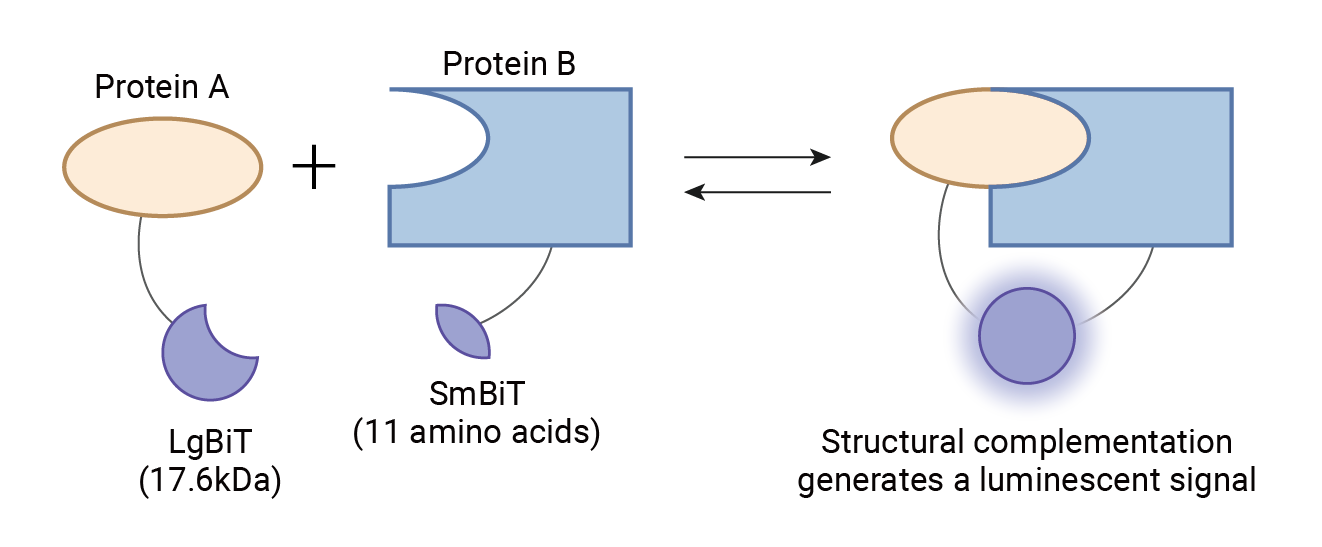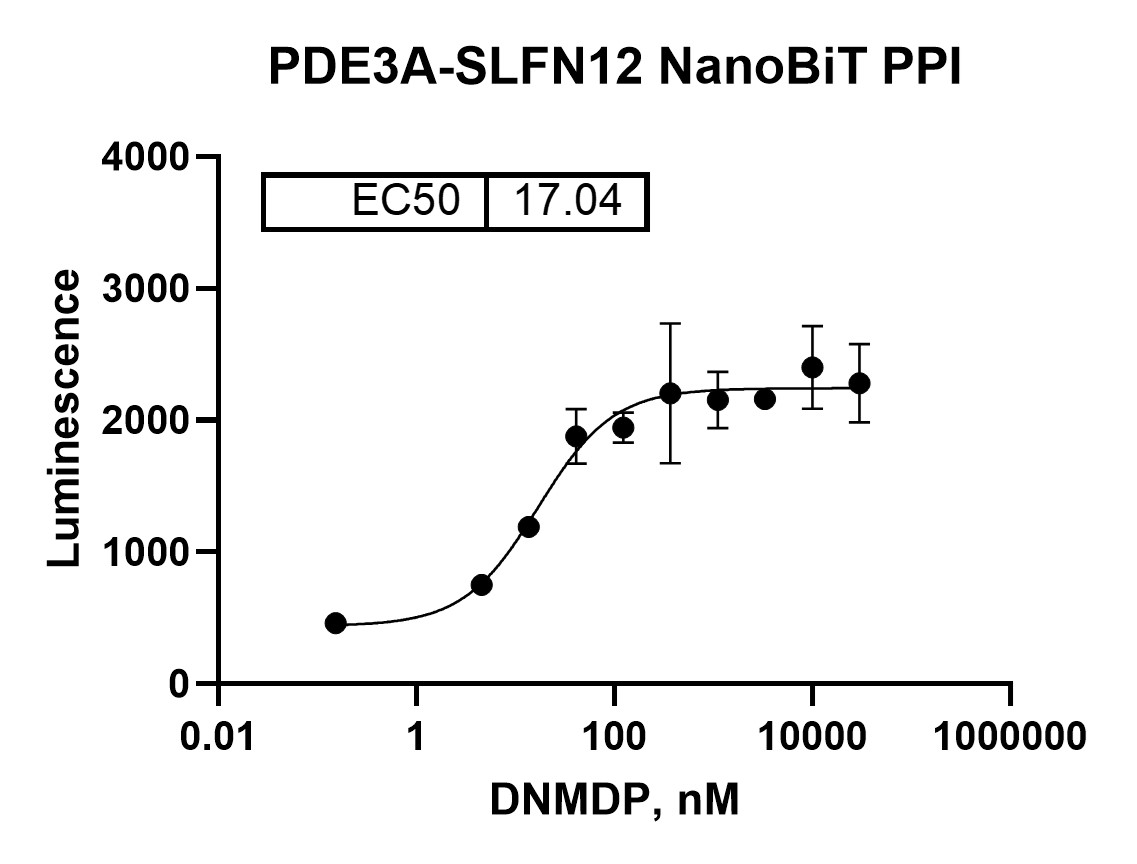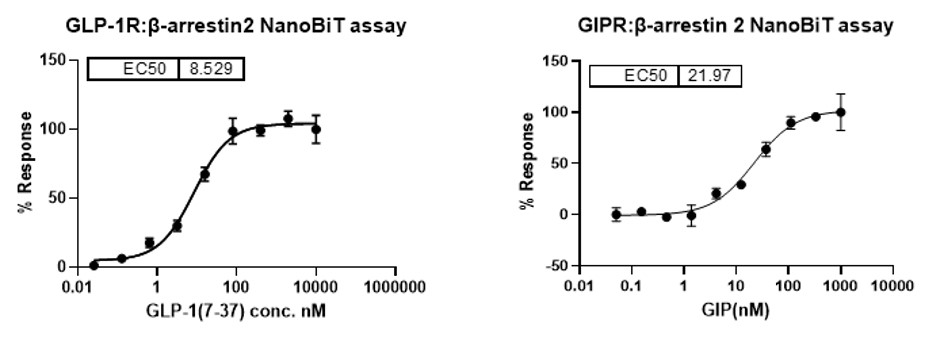The NanoBiT Protein-Protein Interaction (PPI) Assay is a sensitive, bioluminescence-based method designed to detect and quantify protein-protein interactions in real-time, within live cells. The NanoBiT system uses a split luciferase strategy, where two small luciferase fragments are fused to interacting proteins of interest. When the proteins come into proximity, the luciferase fragments reassemble to form an active enzyme, producing a strong luminescent signal. This approach allows for highly sensitive and specific detection of PPIs, making it an ideal tool for studying interaction dynamics, drug screening, and pathway analysis. Notably, our GPCR β-arrestin assay also employs this NanoBiT system to monitor receptor-arrestin interactions with exceptional precision.
The NanoBiT assay leverages two subunits of NanoLuc luciferase: the larger LgBiT and smaller SmBiT fragments. These fragments are individually fused to two proteins of interest. When these proteins interact, the NanoLuc fragments come into close proximity, allowing them to reconstitute the active enzyme, resulting in bioluminescence. The intensity of the signal correlates with the strength and duration of the protein-protein interaction.

The system is flexible in that the fragments do not interact unless brought together by the proteins of interest. This makes the assay highly specific, with low background noise.
✅ Sensitive: NanoBiT fragments have low affinity, ensuring that the signal reflects true protein interactions.
✅ Easy-to-Use: Requires only one reagent addition, with no need for specialized equipment beyond standard luminescence readers.
✅ Dynamic Range: Allows for the detection of both weak and strong PPIs.

The NanoBiT PPI assay shows the interaction between PDE3A and SLFN12 in the presence of increasing concentrations of DNMDP. The luminescence signal correlates with the reassembly of the NanoBiT luciferase fragments, indicating protein-protein interaction.
GPCR/β-arrestin NanoBiT Assay Application
One of the key applications of the NanoBiT PPI assay is in studying GPCR/β-arrestin interactions, which are critical for G-protein-coupled receptor (GPCR) signaling pathways. By fusing LgBiT to β-arrestin and SmBiT to the GPCR, the interaction can be detected in real time as these proteins come together following receptor activation. The luminescence generated through NanoBiT reassembly provides a direct readout of GPCR activation and signaling dynamics, making it an effective tool for drug discovery and functional analysis of GPCR-targeted therapeutics.

We value your inquiries and are here to provide you with tailored solutions for your drug discovery and development needs. Whether you have questions, require more information, or are interested in discussing potential collaborations, our team of experts is just a message away.
Feel free to reach out to us.